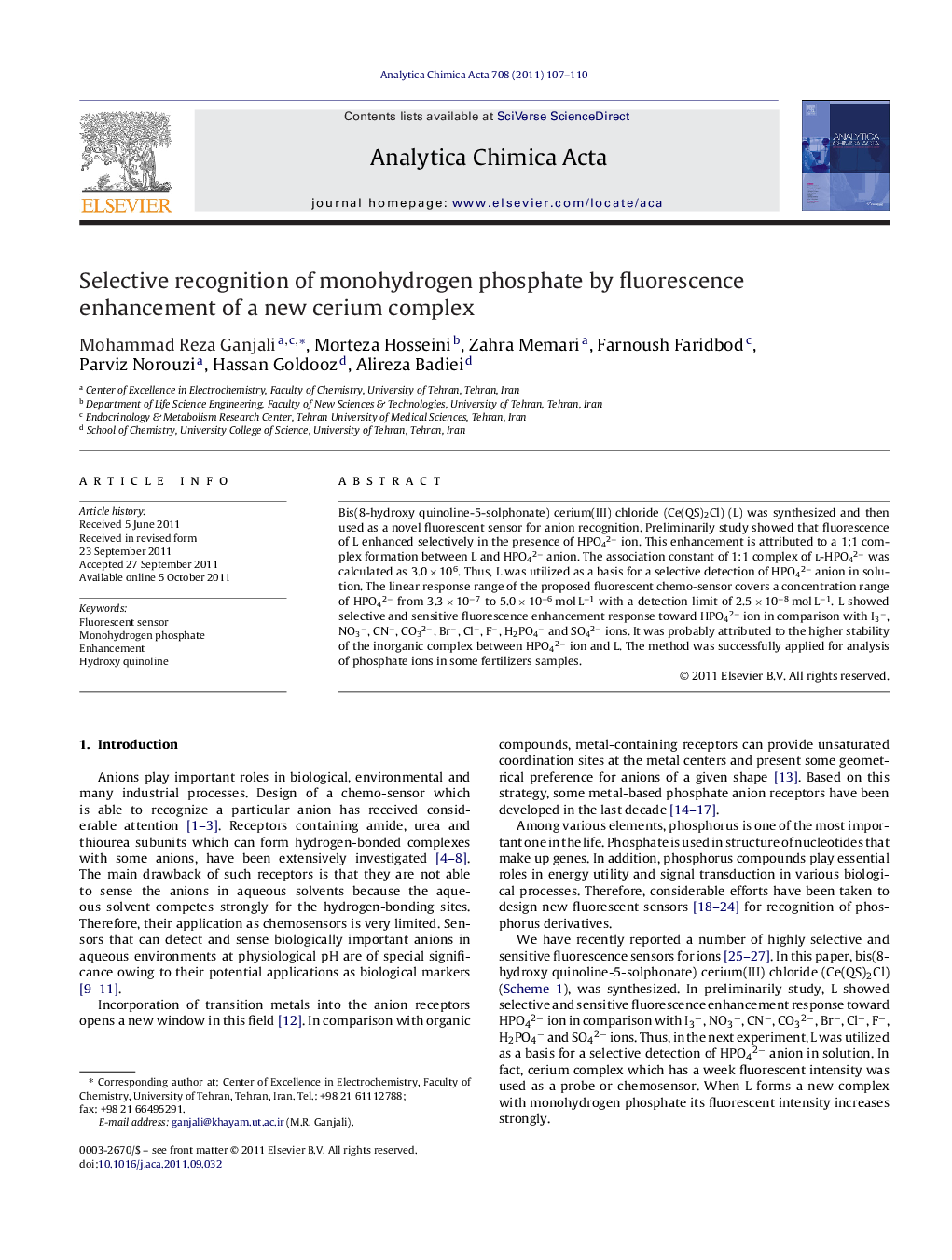| Article ID | Journal | Published Year | Pages | File Type |
|---|---|---|---|---|
| 1166386 | Analytica Chimica Acta | 2011 | 4 Pages |
Bis(8-hydroxy quinoline-5-solphonate) cerium(III) chloride (Ce(QS)2Cl) (L) was synthesized and then used as a novel fluorescent sensor for anion recognition. Preliminarily study showed that fluorescence of L enhanced selectively in the presence of HPO42− ion. This enhancement is attributed to a 1:1 complex formation between L and HPO42− anion. The association constant of 1:1 complex of l-HPO42− was calculated as 3.0 × 106. Thus, L was utilized as a basis for a selective detection of HPO42− anion in solution. The linear response range of the proposed fluorescent chemo-sensor covers a concentration range of HPO42− from 3.3 × 10−7 to 5.0 × 10−6 mol L−1 with a detection limit of 2.5 × 10−8 mol L−1. L showed selective and sensitive fluorescence enhancement response toward HPO42− ion in comparison with I3−, NO3−, CN−, CO32−, Br−, Cl−, F−, H2PO4− and SO42− ions. It was probably attributed to the higher stability of the inorganic complex between HPO42− ion and L. The method was successfully applied for analysis of phosphate ions in some fertilizers samples.
Graphical abstractFigure optionsDownload full-size imageDownload as PowerPoint slideHighlights► Finding a new fluorescent enhancing chemosensor for phosphate ions. ► Synthesis of a new complex (bis(8-hydroxy quinoline-5-solphonate) cerium(III) chloride (Ce(QS)2Cl)) as a practical fluorescent probe. ► Analysis of phosphate content in three kinds of fertilizers, mixed fertilizer (N–P–K), triple super phosphate (TSP), and single super phosphate (SSP) (from Zarrin Kood Co., Tehran, Iran).
